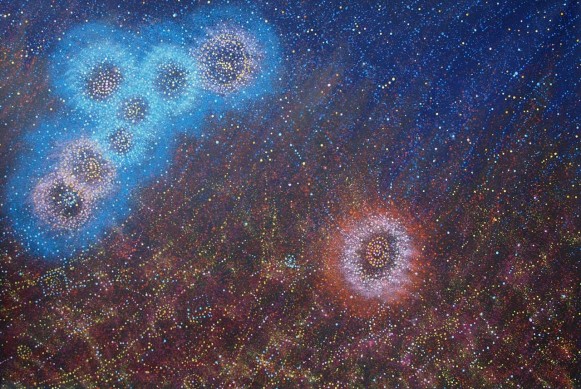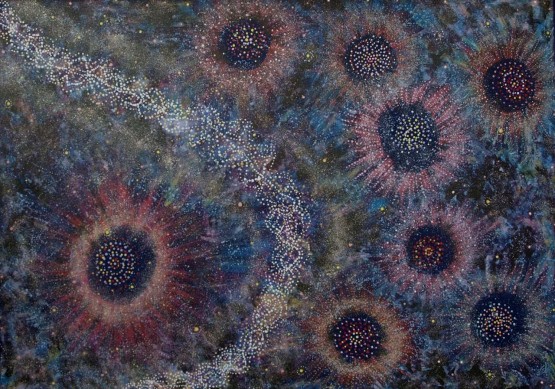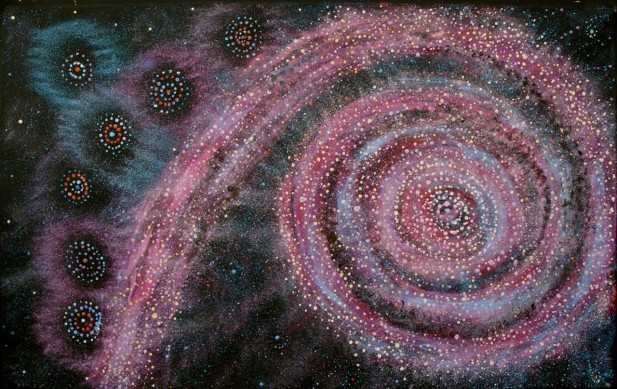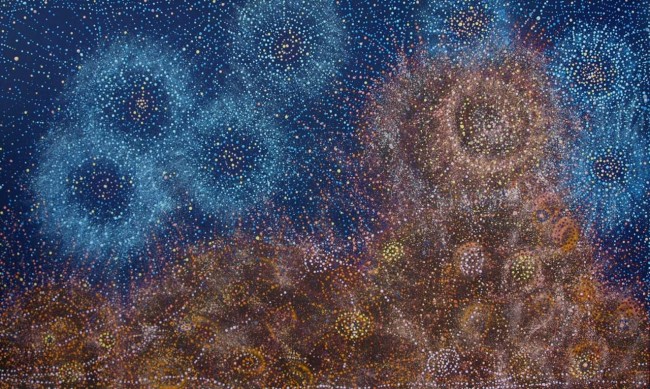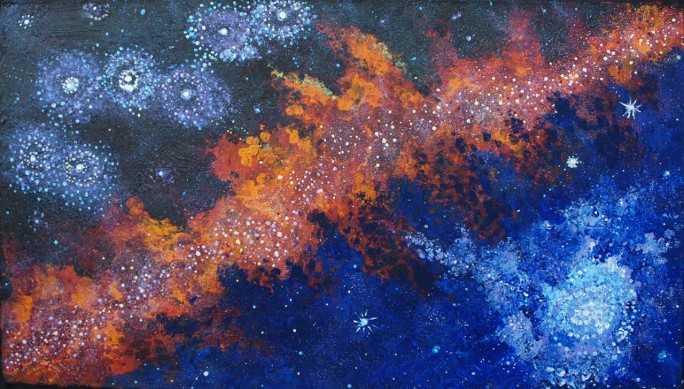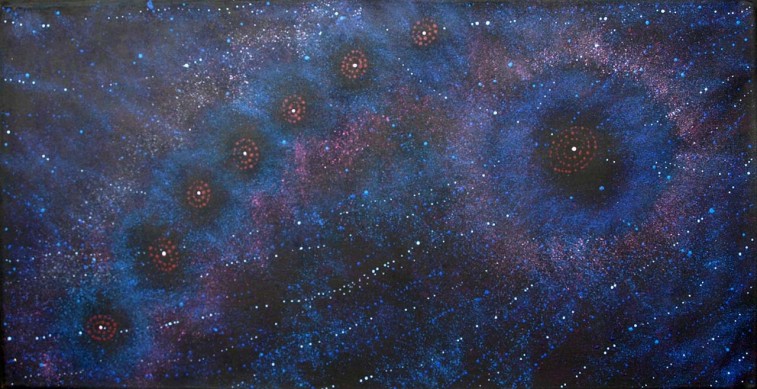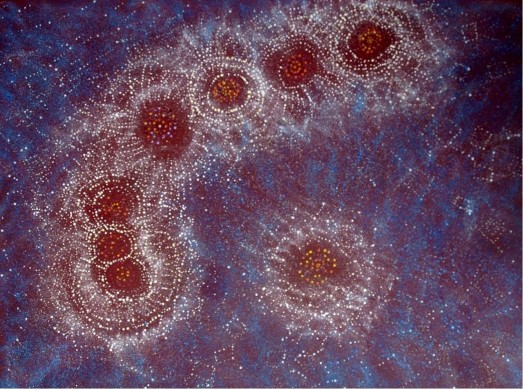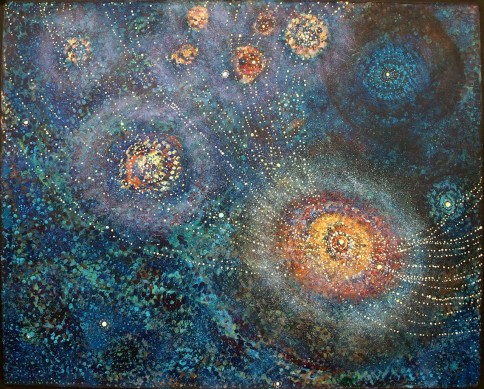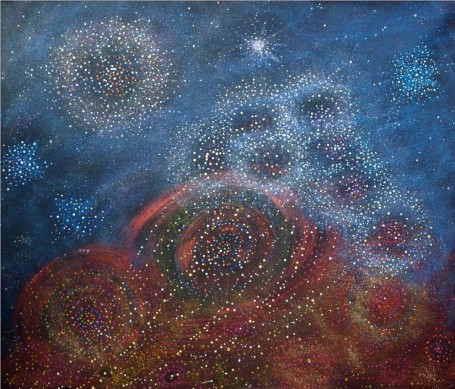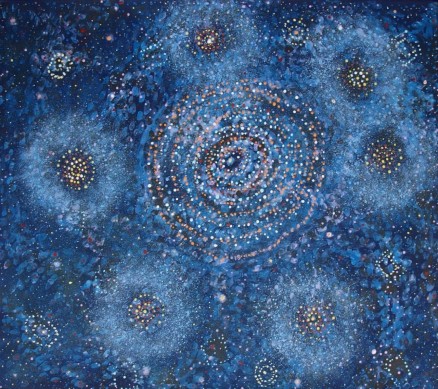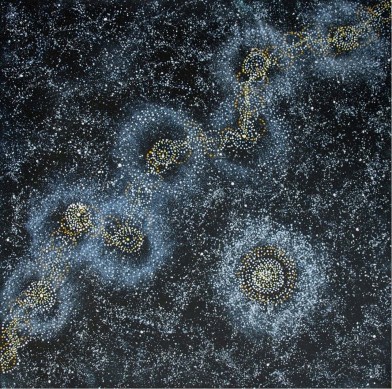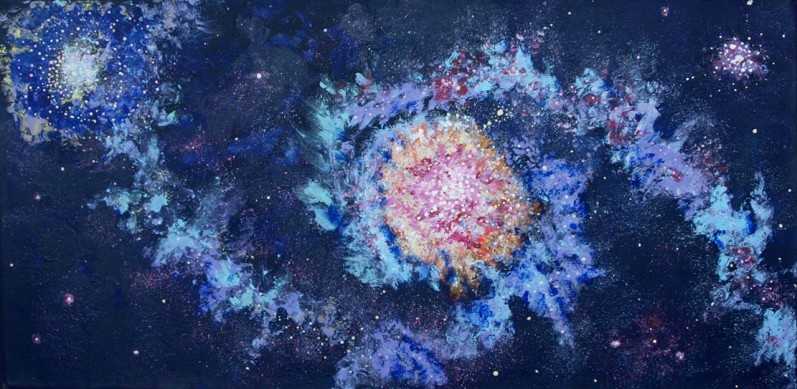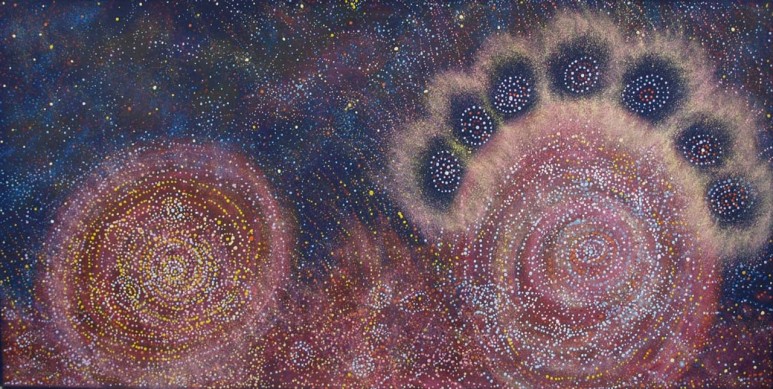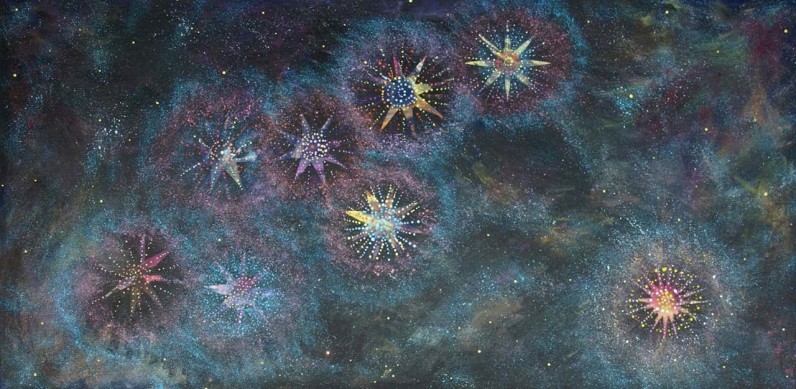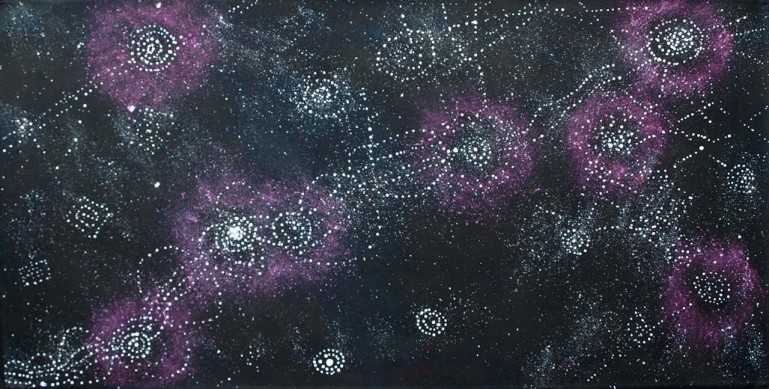Alma Nungarrayi Granites - Night Sky
Gallery 1
16 November – 22 December, 2012
As the world’s oldest continuous culture, Aboriginal people can make the claim to be the world’s first astronomers. For them, gazing at the stars is about more than making out and naming constellations. Ray Norris is an astronomer and adjunct professor in the department of Indigenous Studies at Macquarie University in Sydney. “There is a lot of astronomy used in the Australian Aboriginal culture and it goes way beyond naming constellations and telling stories,” he said.
“The Aboriginals were quite sophisticated, they used the stars to determine how the tides work, how planets move, where to find food. We have a site – there may be others – where stones lined up to indicate when the sun sets on midsummer’s day and midwinter’s day – the Aboriginal Stonehenge if you like. The Aboriginal people were nomadic, so they needed to know in advance when it was time to move and they used the stars for this.”
Perth astro-photographer John Goldsmith is also researching Aboriginal astronomical knowledge. “Cultures all over the world, including ancient cultures, used the stars for all sorts of reasons,” he said. “The star patterns were important for Aboriginal people, they used their stars for things like navigation, time keeping, calendars and searching for food. A good example is the story of the great emu in the sky,” he said.
“It is quite different to normal star patterns, the dark areas within the Milky Way make the shape of a giant emu – almost like a reverse of what we usually see in a constellation. One of the best times to find emu eggs is the first rains of the season. There is a fantastic show of the star pattern at the same time emus start to lay their eggs; so the Aboriginals knew it was time to hunt emu eggs.”
“There is a direct link of knowledge of the night sky with what is happening on the ground.” Mr Goldsmith says there is a strong link between astronomy and history. “The night sky is a really rich source of human history and culture,” he said. “All the cultures around the world have stories and knowledge wrapped up in the stars. The sky is like a global history book for those than can interpret it.”
Alma Nungurrayi Granites paints the great Warlpiri story of the Seven Sisters Dreaming, telling the narrative of the ancestral Napaljarri sisters who are found in the night sky in the star cluster known as the Pleiades, in the constellation Taurus. The Pleiades are seven women often depicted in paintings of this Jukurrpa carrying the Jampijinpa man Wardilyka, who is in love with the Napaljarri-warnu and who is represented in the Orion’s Belt cluster of stars. Jukurra-jukurra, the morning star, is a Jakamarra man who is also in love with the seven Napaljarri sisters and is often shown chasing them across the night sky. In a final attempt to escape from the Jakamarra, the Napaljarri-warnu turned themselves into fire and ascended to the heavens to become stars.
Further information is available on exhibiting artists on the following links

